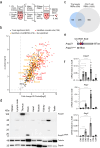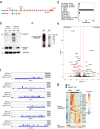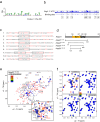The thymocyte-specific RNA-binding protein Arpp21 provides TCR repertoire diversity by binding to the 3'-UTR and promoting Rag1 mRNA expression
- PMID: 38467629
- PMCID: PMC10928157
- DOI: 10.1038/s41467-024-46371-z
The thymocyte-specific RNA-binding protein Arpp21 provides TCR repertoire diversity by binding to the 3'-UTR and promoting Rag1 mRNA expression
Erratum in
-
Correction to "The thymocyte-specific RNA-binding protein Arpp21 provides TCR repertoire diversity by binding to the 3'-UTR and promoting Rag1 mRNA expression".Nat Commun. 2024 Aug 5;15(1):6632. doi: 10.1038/s41467-024-50610-8. Nat Commun. 2024. PMID: 39103338 Free PMC article. No abstract available.
Abstract
The regulation of thymocyte development by RNA-binding proteins (RBPs) is largely unexplored. We identify 642 RBPs in the thymus and focus on Arpp21, which shows selective and dynamic expression in early thymocytes. Arpp21 is downregulated in response to T cell receptor (TCR) and Ca2+ signals. Downregulation requires Stim1/Stim2 and CaMK4 expression and involves Arpp21 protein phosphorylation, polyubiquitination and proteasomal degradation. Arpp21 directly binds RNA through its R3H domain, with a preference for uridine-rich motifs, promoting the expression of target mRNAs. Analysis of the Arpp21-bound transcriptome reveals strong interactions with the Rag1 3'-UTR. Arpp21-deficient thymocytes show reduced Rag1 expression, delayed TCR rearrangement and a less diverse TCR repertoire. This phenotype is recapitulated in Rag1 3'-UTR mutant mice harboring a deletion of the Arpp21 response region. These findings show how thymocyte-specific Arpp21 promotes Rag1 expression to enable TCR repertoire diversity until signals from the TCR terminate Arpp21 and Rag1 activities.
© 2024. The Author(s).
Conflict of interest statement
The authors declare no competing interests.
Figures









References
MeSH terms
Substances
Grants and funding
LinkOut - more resources
Full Text Sources
Molecular Biology Databases
Research Materials
Miscellaneous

